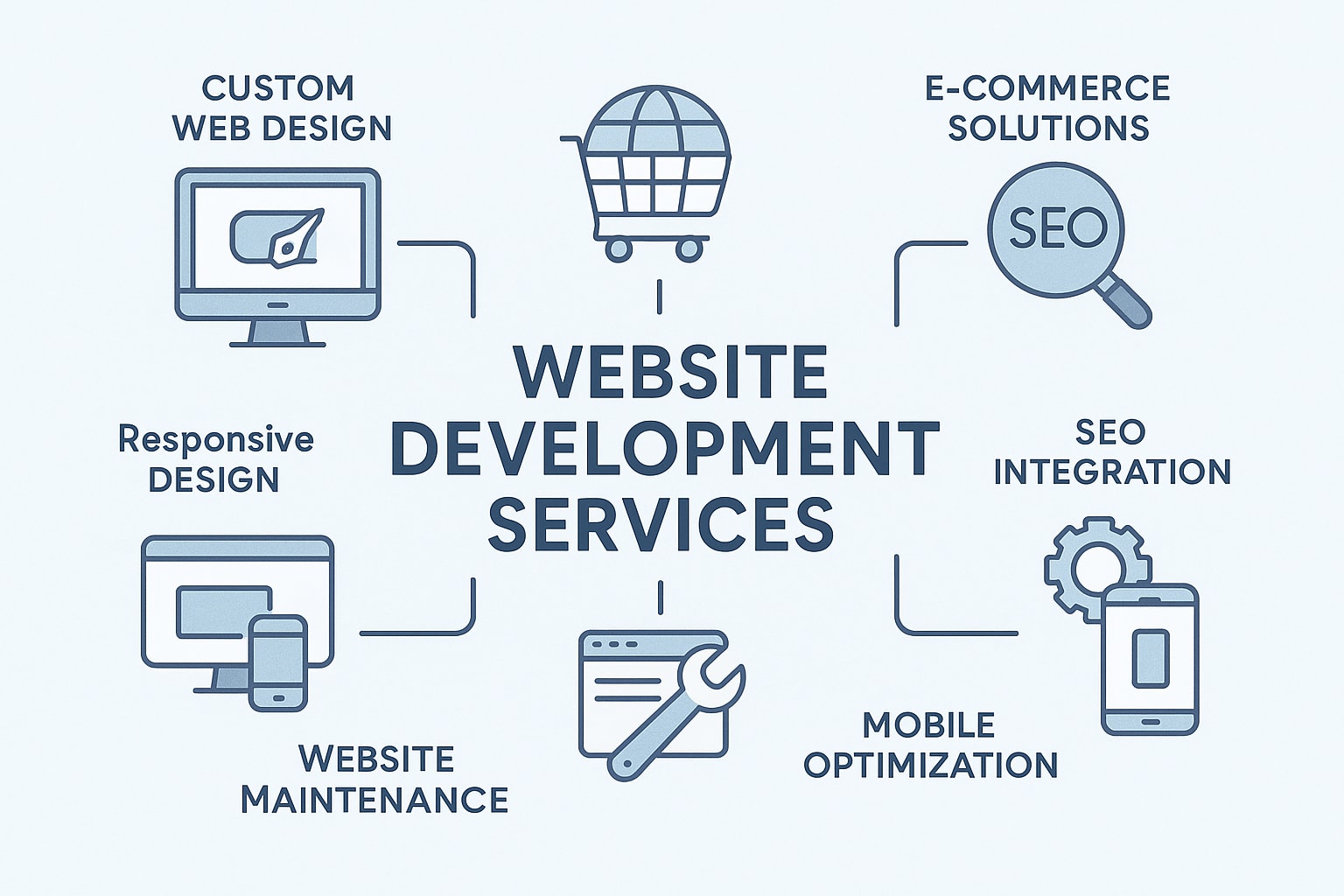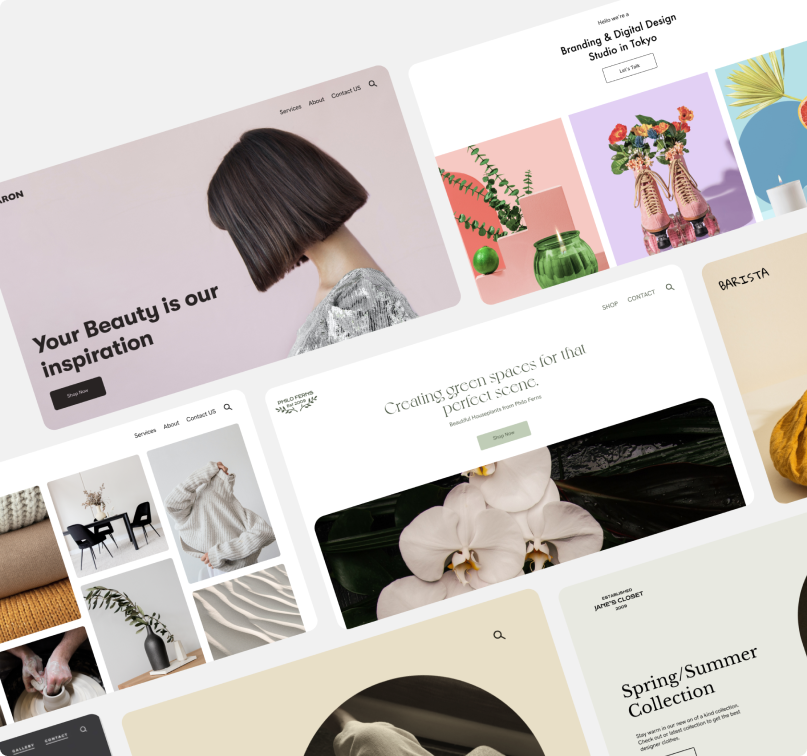Discover how Kelowna Website Development delivers responsive designs that connect with audiences.
Discover Just How Website Design Functions to Develop Engaging User Experiences
Internet layout plays a vital function fit user experiences across digital systems. By comprehending crucial principles like functionality and visual power structure, developers can produce sites that not only attract site visitors but additionally urge them to involve. Efficient designs and well-balanced color design can greatly influence user actions. There are deeper factors to consider that go beyond looks, which are essential for promoting an inclusive on-line atmosphere. What are these elements that can change an easy internet site right into a compelling experience?
Recognizing the Concepts of Internet Design
The foundation of reliable website design rests on a collection of core concepts that assist the creation of involving customer experiences. These principles consist of usability, access, and visual power structure, each playing a crucial role in how customers interact with an internet site. Functionality assures that customers can navigate intuitively, finding details effortlessly. Accessibility expands the reach of an internet site, fitting individuals with varied requirements and capabilities. Visual power structure guides individuals' attention to crucial elements, assisting in easier understanding of content. In addition, uniformity in design elements promotes experience, boosting customer comfort. Shade schemes and typography ought to match the total aesthetic while maintaining readability. Additionally, responsive style adapts to numerous tools, guaranteeing a seamless experience across platforms. By sticking to these principles, designers create sites that not just mesmerize individuals yet additionally direct them toward wanted actions, eventually boosting involvement and contentment.
The Significance of Design in Individual Experience
Efficient layout acts as a backbone for customer experience, affecting exactly how site visitors view and communicate with a website. A well-structured format overviews users' attention, making it easier for them to navigate and find relevant info. By organizing material realistically, developers can produce a seamless circulation that decreases cognitive tons, allowing individuals to concentrate on their tasks.

Receptive layouts guarantee that web sites operate well throughout various devices, preserving functionality no matter of display dimension. Ultimately, a thoughtful design is vital in producing an interesting customer experience that promotes contentment, urges exploration, and raises the probability of conversions. Focus to format style is vital for successful web communications and total user involvement.
Shade Schemes and Their Effect On Involvement
How do color design affect customer involvement on internet sites? Color design play an essential role fit customer understanding and habits. They evoke emotions and can greatly impact just how users connect with a website. Warm colors like red and orange can promote enthusiasm and necessity, while cooler shades like eco-friendly and blue typically share calmness and trust fund. - Kelowna Website Development
Uniformity in shade use promotes brand name recognition, making individuals extra likely to involve with familiar visuals. Efficient shade contrast improves readability, making certain individuals can quickly navigate content without stress. Furthermore, the emotional associations of colors can lead users toward wanted activities, such as clicking a call-to-action button.
Ultimately, an attentively selected color pattern can not only attract individuals but additionally improve their general experience, resulting in higher interaction rates and enhanced fulfillment. Therefore, web designers need to meticulously take into consideration shade choices to optimize user interaction and cultivate a positive atmosphere.
Navigating Best Practices for User-Friendly Site
What makes navigation intuitive and straightforward on a site? Reliable navigation relies click here for more upon clear framework and logical hierarchy. Users should easily situate menus, normally positioned on top or side of the web page, permitting fast access to important areas. Consistency in layout components-- such as typefaces, colors, and switch designs-- facilitates experience, improving customer comfort. Detailed labels for navigating web links are crucial; they have to precisely stand for the web content Read More Here individuals can anticipate when clicked.
Furthermore, including a search attribute can help customers in discovering certain information quickly. Dropdown menus can arrange subcategories without frustrating visitors, while breadcrumb routes assistance users track their area within the website. Mobile optimization is additionally important, as touch interfaces require bigger switches and receptive styles. Inevitably, focusing on simpleness and quality in navigation allows customers to engage better with the web site, promoting a favorable user experience.
Making sure Access for All Individuals
Making certain ease of access for all users is critical in website design, as around 15% of the international population lives with some kind of handicap. Web developers must focus on inclusivity by sticking to established guidelines like the Web Material Ease Of Access Standards (WCAG) These standards give crucial requirements that improve use for individuals with visual, auditory, motor, and cognitive problems.
Trick practices include using descriptive alt text for pictures, making sure adequate color comparison, and giving key-board navigability. Additionally, executing screen reader compatibility can significantly enhance the experience for aesthetically impaired users.
Checking web sites with varied individual groups, consisting of those with handicaps, can disclose prospective barriers and educate essential changes. Educating layout groups about access can foster a society of inclusivity, eventually developing an extra appealing and easy to use internet experience. By focusing on availability, designers not just increase their audience however also show social obligation and dedication to equivalent access for all.
Frequently Asked Inquiries
What Tools Can I Make Use Of to Style My Site?
To develop a web site, one can use tools like Adobe XD, Figma, Lay Out, and WordPress. These platforms provide various attributes for design, prototyping, and content monitoring, helping with the production of visually appealing and useful sites.
Just How Can I Evaluate My Internet site's Customer Experience?
To evaluate a website's customer experience, one can utilize devices like Google Analytics for behavior monitoring, conduct usability screening with genuine individuals, and gather responses with surveys to recognize locations for enhancement and boost general engagement.
What Prevail Mistakes in Website Design to Avoid?
Typical mistakes in web design include messy layouts, poor navigation, lack of mobile optimization, sluggish filling times, and using way too many typefaces or shades. These concerns can hinder user experience and minimize total site effectiveness.
Exactly how Commonly Should I Update My Internet site's Design?
A website's layout should be upgraded each to three years, or more frequently if considerable patterns arise or customer feedback indicates dissatisfaction. Routine updates enhance looks and functionality, making sure a engaging and fresh individual experience.
Can I Find Out Website Design Without Coding Understanding?
Yes, one can learn Source web layout without coding expertise. Various devices and systems permit users to develop aesthetically appealing internet sites via drag-and-drop interfaces, allowing creativity without the complexities of programming languages.
